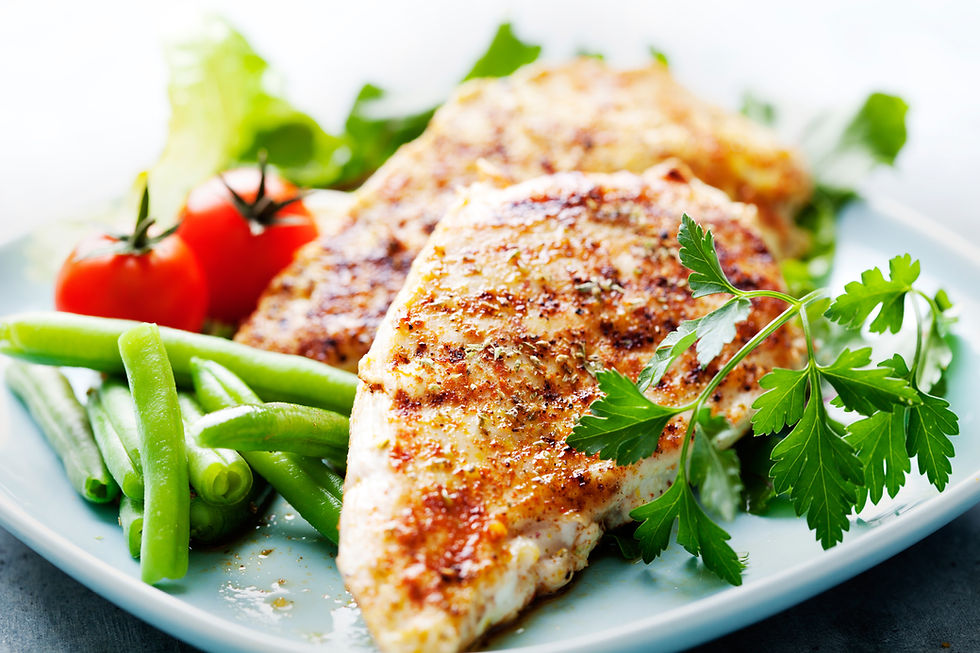Conclusion to the Macro Series: Fuel with Fats
- Stacey Schley, MD
- Jun 1, 2020
- 2 min read

Last but not least, fats. This one is short & sweet. If you read my intro post, you know this may be my favorite category. I often look at fat as a “filler” of the equation. Try to meet your protein and carbohydrate goals, determine how many calories you have left, and fill it with healthy fats. As long as your fat percentage falls between 20 and 40%, you’re good. Otherwise, reassess your goals. Studies indicate that extremely low-fat diets (< 20% total kcals) have no advantages for athletes.
I'm including this for completeness sake based on the resources I used, though I feel it's poorly supported. There is some evidence to suggest that low fat intake may be associated with lower testosterone levels, though the evidence is weak, at best [Association does not equal causation and these studies did not account for the confounding variable of low total kcals. Again, these studies were done in body builders and are not generalizable to the majority. Really, the key point here is that you shouldn't believe everything you read.]
Key points:
Aim for 20-40% of fat
No athletic advantage has been found in diets with < 20% fat
Don't believe everything that you read
Final thought on macros:

If you don’t know where to start with macros, a commonly used equation is 40% carbs, 40% protein, and 20% fat. I know, I know- if you were reading closely from the start, this goes against what I discussed in the intro section. Percentages can be flawed, but unless you are an extreme athlete or have a very low kcal goal (in which case you should be following with a physician, anyways) it’s a fine place to start, especially if you don’t like math.
Everyone will respond differently. Try it out, see how your body responds, tweak as necessary. Remember, sustainable changes should be implemented over months, not days to weeks. My current goal is ~40% protein, 30% carbs, 30% fat. I’ll let you know how it turns out.
As always, #embracemovement.
References for macro series:
Helms, E. R., Aragon, A. A., & Fitschen, P. J. (2014). Evidence-based recommendations for natural bodybuilding contest preparation: nutrition and supplementation. Journal of the International Society of Sports Nutrition, 11(1). doi: 10.1186/1550-2783-11-20
Kerksick, C. M., Arent, S., Schoenfeld, B. J., Stout, J. R., Campbell, B., Wilborn, C. D., … Antonio, J. (2017). International society of sports nutrition position stand: nutrient timing. Journal of the International Society of Sports Nutrition, 14(1). doi: 10.1186/s12970-017-0189-4
Phillips, S. M. (2016, October). Protein and Exercise in Weight Loss: Considerations for Athletes. Retrieved from https://www.gssiweb.org/en/sports-science-exchange/Article/sse-159-protein-and-exercise-in-weight-loss-considerations-for-athletes
Porter, L. (2017). The Macros Diet (Flexible Dieting). EBSCO Information Services. Retrieved from https://www.ebscohost.com/assets-sample-content/NutrRC_EBCS_The_Macros_Diet.pdf
Position of the American Dietetic Association, Dietitians of Canada, and the American College of Sports Medicine: Nutrition and Athletic Performance. (2009). Journal of the American Dietetic Association, 109(3), 509–527. doi: 10.1016/j.jada.2009.01.005




Comments